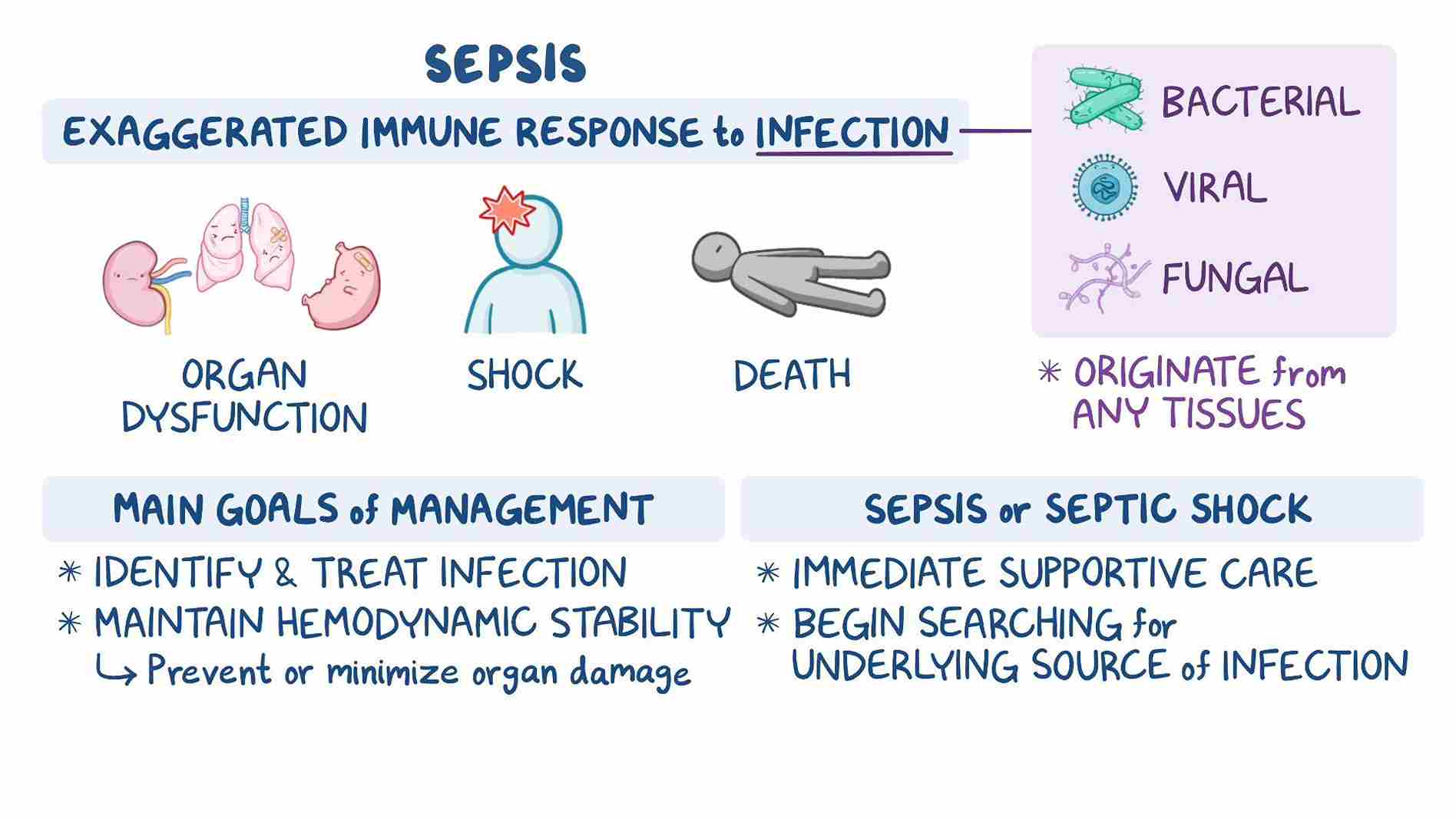Sepsis NCLEX questions
Sepsis is a serious body disorder that occurs when the immune system responds extremely to an infection. The reaction causes the immune system to destroy its own tissues and organs. The disease requires a swift response from healthcare specialists. Sepsis NCLEX questions are potent resources for preparing nurses to address sepsis accordingly.
Nurses play a crucial role in the management of sepsis disorders. As part of the frontline caregiving team, nurses provide initial diagnosis and prompt intervention for sepsis disease. Sepsis is commonly evaluated in the licensure exam through sepsis NCLEX questions. If you are preparing for NCLEX, Naxlex can help you get a guaranteed A in the exam. Try Naxlex today for NCLEX success.
Crucial topics explored in sepsis NCLEX questions
As primary healthcare providers, nurses must be equipped with the requisite skills to offer appropriate nursing interventions for sepsis patients. Sepsis NCLEX questions evaluate the core skills nurses need to provide effective care. As discussed below, nurses need to master the concepts and questions evaluated in the sepsis questions.
-
Pathophysiology of sepsis disease
-
Epidemiology of sepsis
-
The causes of sepsis disease
-
Signs and symptoms of sepsis disease
-
Prevention of sepsis disorder
-
Possible complications of the disease
-
Diagnosis of the disease
-
Management of sepsis patients
-
Nursing management of the disease
Pathophysiology of sepsis disease
The development of sepsis disorder follows a gradual process, which is covered comprehensively in the sepsis NCLEX questions. The disease transforms through the following stages.
-
Microorganisms enter the human body, invading its tissues. Consequently, the body's immune system responds accordingly.
-
The immune response activates biochemical cytokines and mediators linked with the inflammatory response.
-
Increased capillary permeability interrupts the cells' provision of adequate perfusion, oxygen, and nutrition.
-
The anti-inflammatory response produced activates the coagulation, causing blood clots.
-
Imbalances in the inflammatory response and blood clotting are crucial for the pathophysiology of sepsis disease.

Epidemiology of sepsis
Sepsis affects hundreds of thousands of people in the U.S. and across the globe. There is a growing number of people affected by the disease each year, so sepsis should be given more attention in the delivery of healthcare. The following data illustrates the epidemiology disorder.
-
Each year, approximately 750,000 people are affected by sepsis disease.
-
Older adults are more prone to sepsis because of the reduced immune system
-
An estimated 20% to 30% of patients with severe sepsis may never recognize the affected area.
The causes of sepsis disease
Different conditions can increase a patient's risk of sepsis disease. Some of the risk factors are illustrated below.
-
People with immunosuppression have higher chances of getting sepsis due to a decreased immune system. A low immune system makes it easy for disease-causing microorganisms to invade the body's tissues and organs.
-
Advanced age. Seniors and infants have higher risks of sepsis infection due to weakness in the body.
-
Malnutrition. Poor nutrition can lower the body's defense mechanisms. When the body lacks an effective defense mechanism, it is prone to disease-causing agents.
-
Long-term illness. Individuals with chronic diseases have higher chances of sepsis infection. This is because their bodies are already weakened by the chronic illness-causing pathogens.
-
Invasive treatment procedures. Invasive treatment methods can introduce pathogens to the body, thus causing sepsis.
Signs and symptoms of sepsis disease
Sepsis disease manifests different clinical signs and symptoms. These manifestations are well addressed in the sepsis NCLEX questions. As a nurse, the following are some of the sepsis signs and symptoms you will come across.
-
Patients suffering from sepsis disease experience faster heartbeat because they have interrupted flow of oxygen and nutrition in the body system
-
To compensate for low levels of oxygen and eliminate the carbon dioxide in the body, sepsis patients tend to breathe faster.
-
Sepsis patients have low urine output. To avoid dehydrating the body due to inflammatory processes, the body's metabolism reduces water loss through reduced urine output.
-
Mental deterioration. As sepsis patients' bodies become acidotic, their mental statuses deteriorate.
-
Increased lactate levels. Maldistribution in the blood system elevates lactate levels.
Prevention of sepsis disorder
Prevention is a better treatment option. Before the disease enters the body system, it is recommended to prevent it. Various methods can be used to prevent the occurrence of sepsis disease. Some practical prevention methods evaluated in the sepsis NCLEX questions include;
-
Use of aseptic techniques to put disease-causing agents at bay
-
Healthcare facilities need to prevent central line infections, which are dangerous pathways for sepsis disease.
-
Debriding wounds is a great prevention method. Patients' wounds should be debrided early enough to ensure necrotic tissue is removed.
-
Equipment hygiene. Equipment and other tools used for patient care and treatment, especially those used for invasive procedures, should be clean.
Possible complications of the disease
Like any other disease, complications for sepsis patients can occur if the disease is not managed well. The probable complications are adequately addressed in the sepsis NCLEX questions. Some complications that can occur if the disease is not addressed properly include;
-
Sepsis can advance to severe conditions such as hypotension or hypo-perfusion, among others.
-
The disease can also cause multiple organ failures, which interferes with the normal functioning of the body.
Diagnosis and nursing intervention of the disease
Diagnosing sepsis and applying appropriate intervention strategies early can prevent the progression of the disease. Different clinical methods are used to diagnose the disease, including blood cultures, liver function tests, and blood studies. Nursing interventions include fluid replacement therapy and nutritional therapy. Sepsis NCLEX questions contain relevant study guides for the disease diagnosis procedures.
Conclusion on sepsis NCLEX questions
Sepsis is a serious body disorder that occurs when the immune system responds extremely to an infection. If left unattended, the disease can advance to higher levels, causing serious harm to patients. Different topics such as pathophysiology of sepsis disease, epidemiology of sepsis, the causes of the disease, signs and symptoms, nursing interventions, and more are covered in sepsis NCLEX questions to equip nurses with the skills they need to offer holistic nursing care. If you need help preparing for NCLEX, Naxlex offers personalized guidance helping you to score a guaranteed A in the exam. Get the grade you deserve, though: Naxlex .
Start your journey with us today
Join 1000+ Nursing Students
Powerful learning and clinical tools combined into one platform. The Naxlex Knowledge and Qbanks give you instant and on-the-go nursing knowledge and guidance.




